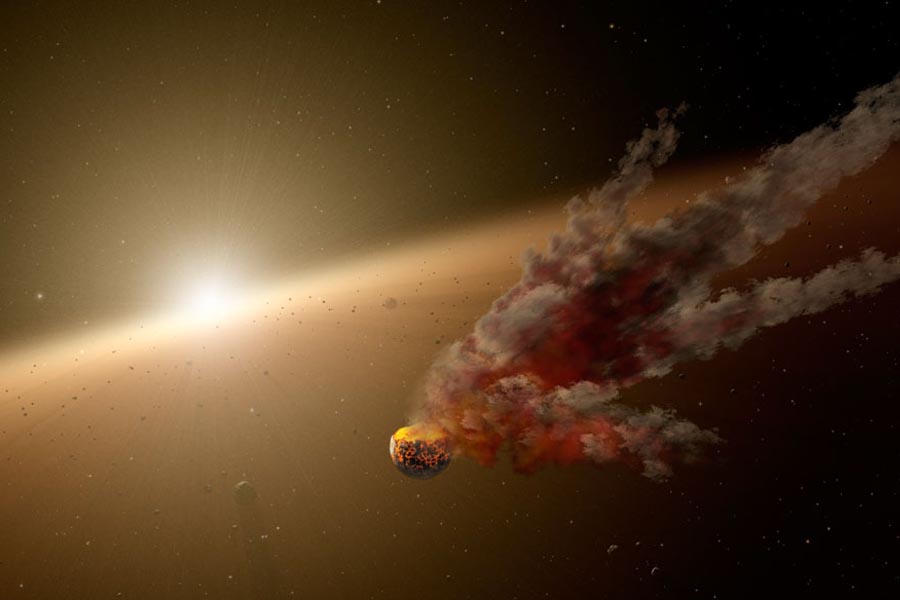Dust might be the cause of the mysterious dimming of Tabby’s star, new research has revealed. This contradicts the crazy theory of a massive structure built by an advanced alien civilization. NASA’s Kepler space telescope has observed rare dimming trends of up to 20 percent in a matter of days. Longer-term significant dimming trends are subtler, though. However, these observations are far from ordinary in standard stars slightly more meaningful than our Sun.
The theory of a megastructure was kind of plausible because it could be taking energy from the star and reducing its brightness. Located roughly 1,400 light years away from Earth, Tabby’s Star became an exciting research topic in 2015.
Published in The Astrophysical Journal, a new study conducted by researchers using the Belgian AstroLAB IRIS observatory and NASA’s Spitzer and Swift missions suggests that an uneven dust cloud located anywhere between the Earth and the star might be causing the dimming over long periods.

The team believes that’s the most likely explanation because less dimming was found in the infrared light compared with the star’s ultraviolet light. Other objects more massive than dust is ruled out given that they would dim all wavelengths of light equally when passing in front of the celestial body, also known as Boyajian’s Star or KIC 8462852.
“This pretty much rules out the alien megastructure theory, as that could not explain the wavelength-dependent dimming,” said lead author Huan Meng, at the University of Arizona, as quoted by NASA’s Jet Propulsion Laboratory’s website. “We suspect, instead, there is a cloud of dust orbiting the star with a roughly 700-day orbital period,” the researcher added.
Amateur astronomers first identified the uniqueness of Tabby’s Star
For this study, researchers used Swift and Spitzer to observe Tabby’s Star in ultraviolet and infrared light, respectively, from January to December 2016. During the same period, the team saw the astronomical body in visible light using AstroLAB IRIS, a public observatory located near Zillebeke, Belgium.

Amateur astronomers who took part in the Planet Hunters project were allowed to search the Kepler data and were the first to identify an unusual light from Tabby’s Star. These participants provide technical and software support to AstroLAB, and their observations led to a formal study of the star, which was named Boyajian’s star after Tabetha Boyajian, the lead researcher.
The most recent research, also led by Boyajian, was focused on long-period dimming. The astronomers have not been able to explain the shorter-term dimming events, nor the 20-percent dips in brightness observed using Kepler in its original mission. Comets are conventional sources of dust that orbits stars and could also explain the long-period dimming noted in the latest research.
Kepler will not continue to follow up on Tabby’s Star now that it is exploring other sky areas in K2, its current mission. Future telescopes might help discover the mystery behind this rare astronomical body.
Siegfried Vanaverbeke, an AstroLAB volunteer who holds a Ph.D. in physics, said Tabby’s Star could have a “solar activity cycle,” which will probably be studied as scientists become interested in the single star.
Source: NASA’s Jet Propulsion Laboratory
